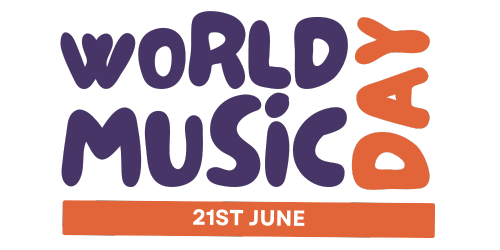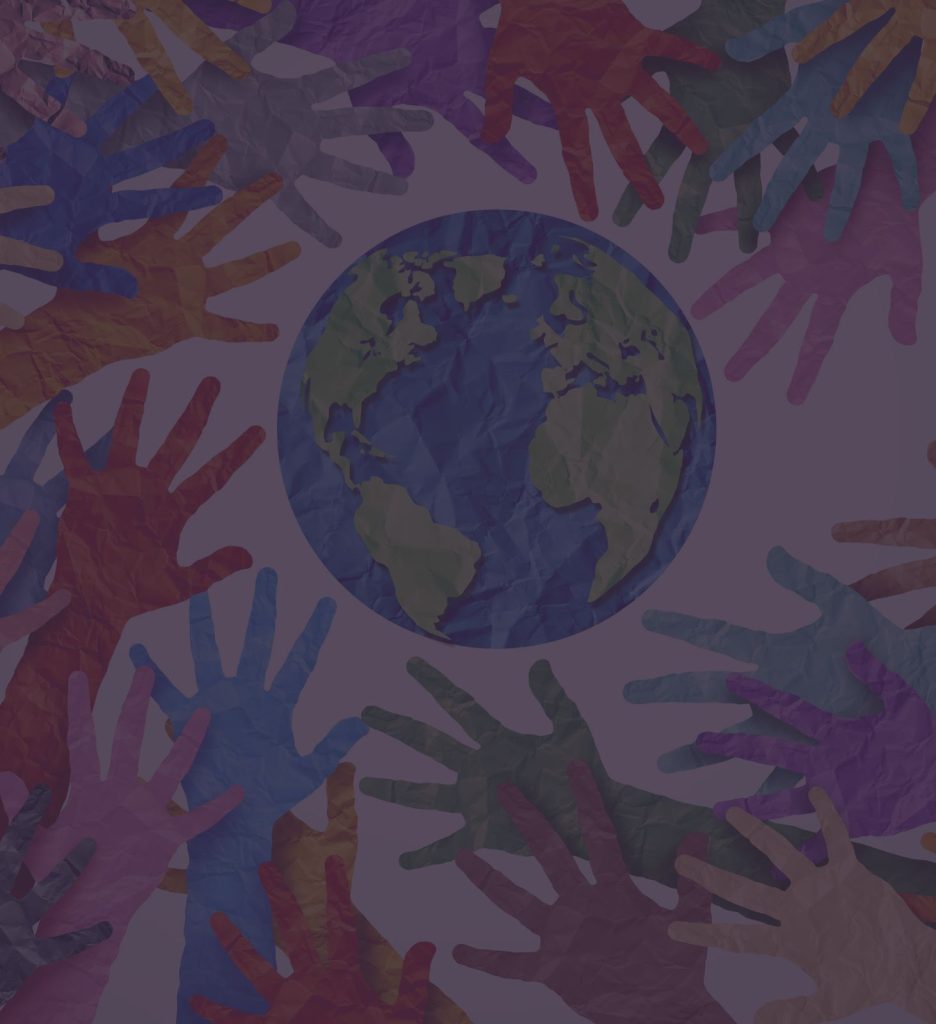World Music Day Secondary School Ideas. World Music Day is an annual event celebrated on June 21st that aims to promote peace, unity, and cultural diversity through music. As a secondary school teacher, you can use this day to educate your students about different cultures and their music, as well as to promote creativity and self-expression. Here are 40 World Music Day Secondary School Ideas:
40 World Music Day Secondary School Ideas
- Organizing a multicultural music festival where students from different cultures can perform traditional music from their countries is a great way to promote cultural awareness and appreciation within the school community. This event can be organized by inviting students and local musicians to come and perform for the school, showcasing the diverse musical traditions of different cultures. To increase the number of cultural representation, it’s important to reach out to different student clubs or cultural societies within the school to invite them to participate in the festival, and also to make sure that the festival is well-promoted to the wider school community, so that everyone has the opportunity to attend and learn about the different cultures and music represented.
- Inviting a local musician to come and perform for the school is another great way to give students the opportunity to experience live music and learn more about the local music scene. This can be done by reaching out to local musicians or music schools and inviting them to come to the school to perform. It’s also important to consider the musical genre and the target audience when inviting a musician, as this will help to ensure that the performance is well-received by the students.
- Creating a school band or choir and having them perform for the school and community is a great way to give students the opportunity to learn about different music styles and develop their own musical skills. This can be done by organizing rehearsals and performances for the school band or choir, and by inviting members of the community to attend their performances. Additionally, it’s important to offer students a diverse range of instruments so that they can experience different musical styles and find what they enjoy.
- Teaching students how to play different musical instruments from around the world is another great way to expose students to different cultures and help them develop a deeper understanding of the music and culture of different countries and regions. This can be done by offering music classes or workshops that teach students how to play different instruments, such as traditional instruments from Africa, Asia, or South America. Additionally, it could be beneficial to organize field trips or invite guest musicians to come to the school to give students the opportunity to learn from experienced musicians.
- Having students research and present on the music and culture of a particular country or region is a great way to give students the opportunity to learn about different cultures and their music. This can be done by assigning research projects or presentations on different countries or regions, and having students present their findings to the class. To increase the interactivity and engagement, students could also organize cultural fairs or food festivals to showcase the culture they’ve researched.
- Organizing a music trivia competition where students can test their knowledge of different musical styles and cultures is a great way to promote cultural awareness and appreciation within the school community. This event can be organized by creating a quiz with questions about different musical styles and cultures, and having students compete in teams to see who can answer the most questions correctly.
- Creating a school-wide playlist featuring music from around the world and playing it throughout the day is a great way to expose students to different cultures and help them develop a deeper understanding of the music and culture of different countries and regions. This can be done by creating a playlist of songs from different cultures and playing it in the school throughout the day, whether it be during classes or during breaks. Additionally, teachers can also incorporate the music into their lessons as a way to expose students to new cultures.
- Have students create their own compositions inspired by different cultures and styles of music. Encourage them to explore various forms of music from around the world, including traditional folk songs, modern pop, and experimental genres. Provide them with resources and guidance on how to compose music, and give them the opportunity to present their compositions in a concert or recital.
- Use music as a way to teach language. For example, incorporate Latin music into Spanish language classes, and use chanson, a type of French song, to teach French. This approach can make learning a new language more engaging and memorable for students.
- Create a school-wide singing or dancing flash mob. Encourage students to learn a song or dance routine from a different culture and then perform it in a coordinated, surprise performance at a school event or in a public space. This can foster a sense of community and shared experience among students and showcase their musical talents.
- Host a karaoke competition featuring songs from around the world. Encourage students to learn and perform songs from different cultures and languages, and provide a platform for them to showcase their vocal abilities. This event can be open to the entire school or just specific grade levels and can be held at school or in the community.
- Organize a school-wide dance party featuring music from different cultures. Encourage students to learn and perform different dance styles from around the world, and provide a platform for them to showcase their abilities. This event can be open to the entire school or just specific grade levels and can be held at school or in the community.
- Use music as a way to explore different historical periods. For example, use classical music to teach about the Renaissance and gospel or soul music to teach about the Civil Rights Movement. This approach can help students understand and relate to historical events and figures, and provide a deeper understanding of the cultural and social context of the music.
- Have students create their own music videos, using songs from around the world as inspiration. Encourage students to create music videos that showcase their own compositions, or remixes of existing songs, and to incorporate elements of different cultures and styles of music. This can be a fun and creative way for students to express themselves and learn about different cultures.
- Teach your students about the history of world music and its impact on contemporary music. Provide students with a comprehensive understanding of the development and evolution of different styles of music from around the world, and how they have influenced contemporary music. This can be achieved through lectures, group discussions, and research projects.
- Organize a concert where students can showcase their own original compositions. Provide students with the opportunity to perform their own compositions in front of an audience, whether that’s the school or the community. This can be a great way to build confidence, showcase talents and motivate students to continue composing and creating.
- Have students create their own world music radio show, featuring music from different cultures and interviews with musicians. Provide students with the opportunity to create their own radio show featuring music from different cultures and interviews with musicians, whether they are local or international. This could be an excellent way to get students to engage with the music more deeply and learn about the musicians themselves.
- Teach your students about the role of music in different religions and spiritual practices. Provide students with an understanding of how music is used in different religious and spiritual practices around the world, including traditional and contemporary examples. This can include lectures, group discussions, and research projects.
- Create a school-wide drum circle, where students can learn about and participate in traditional drumming from around the world. The drum circle would be open to all students and provide an opportunity for them to learn about different drumming styles and techniques from around the world. This could be done through the use of workshops, where students would be able to learn from experienced drummers and practitioners of different drumming styles. Additionally, students would have the opportunity to participate in traditional drumming performances, where they could showcase their new skills and knowledge. By participating in the drum circle, students would not only learn about different cultures and their music, but also develop their teamwork and coordination skills.
- Organize a music swap, where students can trade CDs or MP3s of music from different cultures. This event would give students the opportunity to explore new types of music and expand their musical horizons. The music swap could be organized as a school-wide event, where students would bring in CDs or MP3s of music from different cultures to trade with their classmates. Additionally, students could also have the option to download music from online platforms, such as Spotify or Soundcloud, to share with their classmates. The music swap could also be used as an opportunity to teach students about different music streaming and sharing platforms, as well as the importance of supporting and promoting independent artists.
- Invite a traditional music ensemble to come and perform for the school. This would give students the opportunity to experience live performances of traditional music from different cultures. The ensemble could be composed of musicians from a specific culture or region, or it could be a group that specializes in a particular style or genre of traditional music. The ensemble would not only perform for the students, but also give workshops or Q&A sessions to provide a deeper understanding of the music and culture. This would be a great opportunity for students to learn about different music cultures and to gain a deeper understanding of their own culture, especially for students who come from different backgrounds.
- Have students create their own world music podcast, featuring music and interviews with musicians from around the world. This would give students the opportunity to learn about different types of world music and the musicians who create it, while also developing their own research and interviewing skills. Students could work in teams to research and interview musicians, and then create a podcast featuring the music and interviews. They could also use this as an opportunity to learn about podcast production and editing, as well as how to promote their podcast to a wider audience. This would be a great way for students to explore the world of music and learn about different cultures, through their own podcast.
- Organize a school-wide talent show, featuring performances of music from different cultures. This would give students the opportunity to showcase their own talents and skills, while also learning about different types of music and cultures. The talent show could feature solo performances, group performances, and even dance performances, all of which would focus on different types of world music. This would be a great opportunity for students to learn about different cultures and their music, as well as to gain a deeper understanding of their own culture. Additionally, this event could also serve as an opportunity for students to learn about stage performance, stage production, and event planning.
- Teach your students about the various roles that music plays in different cultures, such as how it is used in healing practices and rituals, or as a means of social and political protest. Encourage them to research and explore the different ways that music is used in different cultures, and to think about how these uses reflect the values and beliefs of those cultures.
- Have students create their own world music-themed art projects, such as paintings, drawings, or sculptures inspired by different musical traditions and styles from around the world. Encourage them to use music as a starting point for their art, and to think about how the rhythms, melodies, and lyrics of the music they are inspired by can inform the visual elements of their art.
- Use music as a way to teach geography and the study of different regions of the world, such as by exploring traditional music from different regions of Africa and learning about the cultural and historical context in which it was created. Encourage students to think about how music reflects the unique characteristics of the regions it comes from, such as the climate, natural environment, and social and political context.
- Invite a local music teacher or professional musician to come and give a workshop on a particular style or culture of music. This can be a great way for students to learn directly from an expert, and to gain a deeper understanding of the history, techniques, and cultural context of the music they are learning about.
- Organize a school-wide sing-along, featuring songs from around the world. This can be a fun and engaging way for students to learn about different musical styles and cultures, and to experience the joy of singing and making music together. Encourage students to research and select the songs that will be included in the sing-along, and to think about how the lyrics, melodies, and rhythms of the songs reflect the cultures they come from.
- Have students create their own playlists of world music and share them with the class, allowing them to explore different cultures and styles of music, while also learning how to curate and present their own music collection.
- Use music as a way to teach about different social issues, such as poverty or human rights, through songs and lyrics from around the world. This can include analyzing the lyrics and message of the songs, and discussing how music can be used as a tool for social change.
- Organize a school-wide dance competition, featuring traditional dances from around the world. This can involve researching and learning about the history, culture, and significance of different dances and choreography, as well as practicing and performing the dances.
- Have students create their own world music-themed short films, which can include elements such as music videos, documentary-style films, or animations. This allows students to explore different cultures and styles of music while also learning about film-making and visual storytelling.
- Teach your students about the business side of the music industry and how it relates to world music. This can include topics such as music distribution, copyright, and the role of record labels in promoting and selling world music.
- Have students create their own world music-themed fashion designs, which can include elements such as traditional clothing, costumes, or accessories inspired by different cultures and styles of music. This allows students to learn about fashion design and the cultural significance of clothing and adornment.
- Organize a school-wide scavenger hunt, where students have to find and identify different instruments from around the world. This can include researching and learning about the history, construction, and cultural significance of different instruments, as well as identifying and locating them within the school or local community.
- Host a music listening party, where students can listen to and discuss different types of world music. This can involve students bringing in music from their own collections, or listening to a curated selection of world music, and discussing the music and its cultural context.
- Have students create their own world music-themed poetry or spoken word pieces. This can include researching and learning about different forms of poetry and spoken word, and using them to express their own experiences and perspectives on world music.
- Teach your students about the use of technology in world music, such as the use of sampling or digital instruments. This can include learning about the history and evolution of technology in music, as well as experimenting with creating their own music using digital tools.
- Organize a school-wide “jam session” where students can experiment with playing and creating world music together. This can include playing different instruments and learning to improvise and collaborate with other musicians.
- Encourage students to attend live world music concerts or festivals in the local community, and have them write a reflection on their experience. This can involve researching and learning about the performers and the music beforehand, as well as reflecting on their own experiences and perspectives on the concert or festival after attending.
These are just a few World Music Day Secondary School Ideas for celebrating World Music Day in your secondary school. By incorporating music from different cultures and encouraging creativity and self-expression, you can help your students develop a deeper understanding and appreciation for the world around them.



